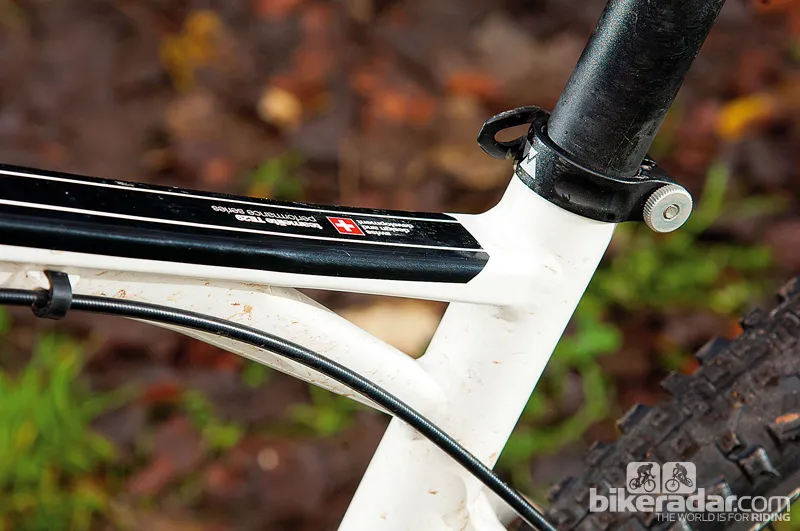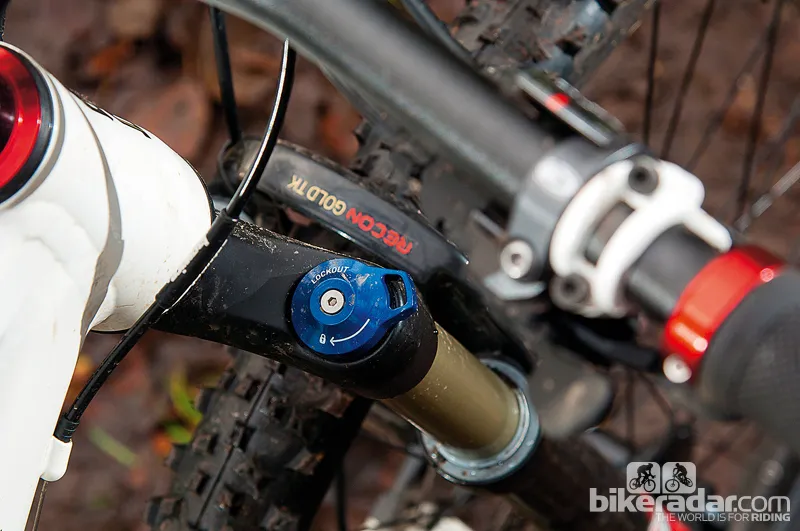This aluminium-framed beauty is BMC’s first 29er. There's a slightly lighter but inevitably more expensive SRAM X0 version, but you'll probably have to wait another year for a 29in-wheeled version of the race-tuned carbon 26er. Still, the Elite is a superbly designed big-wheeler that focuses attention on the small but crucial details.
Ride & handling: Confidently bridges the gap between cross-country race and hard-hitting trail bike
Three of our test riders spent time on the BMC. The most consistent commentary related to the way the short, tight back end makes it feel more instant in acceleration and livelier on climbs than most big-wheelers, as well as making it easier it to manual-wheelie.
The Team Elite 29 tames high-speed rocky and rooty trails nicely, and feels calmer than most 26ers. However, that short, tight rear triangle feels slightly harsher on rough terrain than most other 29ers and there’s limited mud clearance between the front mech and rear tyre, which is an issue when the mud gets really sticky.
Handling wise, no one had any moans. 27lb (12.24kg) is a reasonable weight for a 29er at this price, the steering feels as nimble as most 26ers and the plush air fork and big volume of the tyres help put back the elements of comfort that the stiff frame takes away.
The short tight rear triangle has practical pros and cons but overall character of the ride is superb, almost as lively as the best 26ers but with the stability, comfort and confidence of the best 29ers.

Frame & equipment: Very nicely designed chassis, well equipped with reliably robust componentry
BMC’s Team Elite uses their ISC (Integrated Skeleton Concept) frame design to iron out some of the minor downsides of 29in wheel frames. The curved seat tube helps to shorten the back end and wheelbase, while tight triangulation in both the main frame and the back end keeps the chassis noticeably stiffer and more precise under pressure than most big-wheelers.
BMC’s “skeletal reinforcement elements at the nodal points” (think clever use of tube shaping to beef up the joins) combine with a unique T-shaped top tube to help muffle impact forces at the same time as boosting stiffness, strength and comfort. A tapered 1.5in to 1.125in head tube is kept as short as possible, conspiring with a flat 28.5in handlebar to keep the front end low, remarkably stable and fast handing.
The RockShox Recon fork felt ideally suited to the bike’s character and we’ve got no moans about the 3x10 Shimano SLX drivetrain, Avid Elixir 3 brakes and Alex/Shimano wheels. However, we did have minor reservations about some of the finishing kit.
Schwalbe’s Racing Ralph and Rocket Ron Performance Series tyres are less predictable than the Evolution Series versions. If you lean too much in a corner the side knobs bend suddenly and skip sideways, which is a pity as the centre tread is both fast and grippy, and bikes that handle this well encourage you to push the boundaries.
The rear brake often sent a loud judder into the rear triangle: we reset the calliper and tried new pads but the judder kept coming back. Also, the wide handlebar is great for control but some riders felt it could do with more backsweep for wrist comfort.

This article was originally published in What Mountain Bike magazine, available on Apple Newsstand and Zinio.



